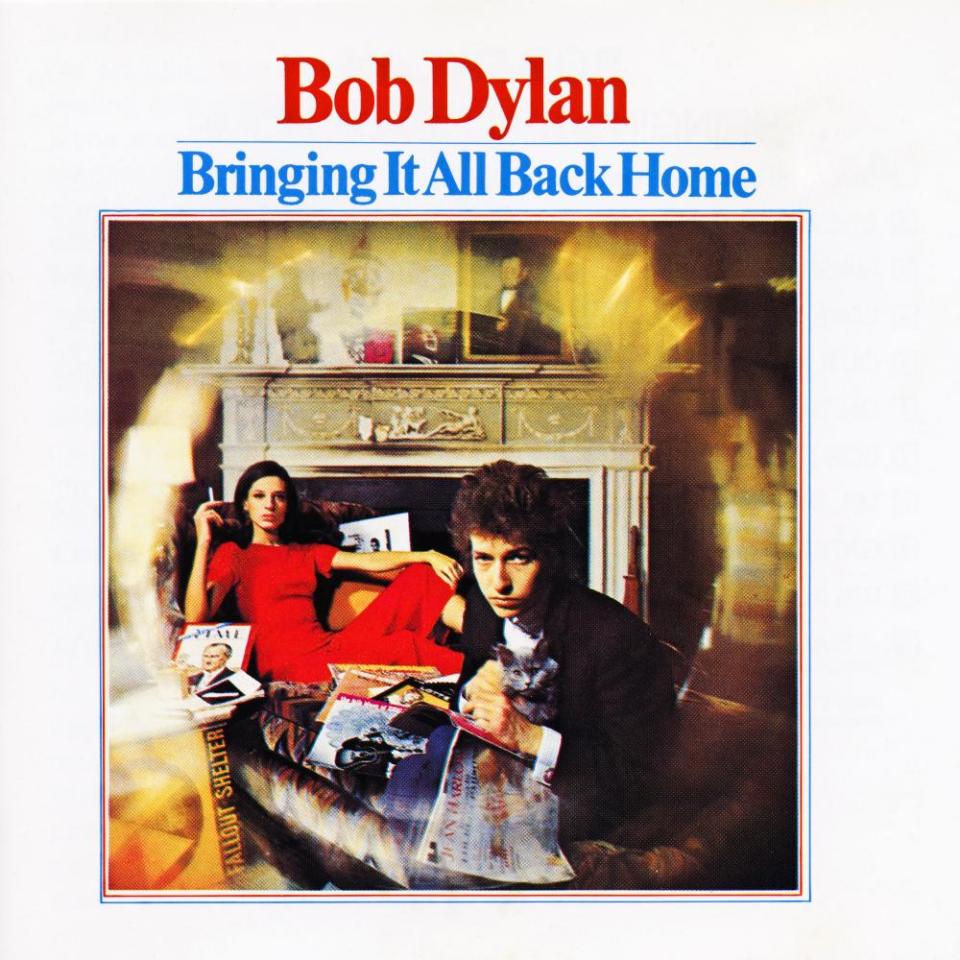From Tubular Bells to Horses: 10 of the best pieces of album artwork

Mike Oldfield
Tubular Bells (1973)
Pre-internet, it could be hard to find anything out about music, so a record cover might be the only information you had access to. At primary school, I learned that Tubular Bells was in a controversial film called The Exorcist (which at the time I thought was porn). I got the album for its mysterious shiny tube floating in the clouds like a UFO – and the music inside matched that soaring image.
Fleet Foxes
Fleet Foxes (2008)
Related: The Guide: Staying In – sign up for our home entertainment tips
The golden age of the vinyl album cover, often enhanced by gatefold sleeves, was long gone by 2008. However, the first album by Fleet Foxes beautifully evokes this era by using Bruegel’s painting Netherlandish Proverbs, which literally illustrates outlandish expressions. It was a return to an age when you would actually buy albums for their covers.
Pink Floyd
Animals (1977)
The high-concept album art of this psychedelic group, who became jaundiced chroniclers of their own increasing wealth, led me to collect everything by them from Welsh record shops when I was 13. The cover of Animals, with its pig floating over Battersea power station against a lurid sky, defined how I imagined London.
Bob Dylan
Bringing It All Back Home (1965)

With so much discussion of Dylan’s songs as he turned 80, plus the Nobel prize, it seems unfair that many of his sleeves are also great art. Crowded with albums, magazines and that dress, this one conveys his changing mood as he abandoned Greenwich Village folk for rocking Americana in upstate New York.
De La Soul
3 Feet High and Rising (1989)
Buying albums for their art is a good idea: I was hooked by the psychedelic joy of this, and accidentally purchased a classic. English art rebels the Grey Organisation worked with De La Soul to create it, getting the band to lie in a circle. A pop art delight.
The Smiths
This Charming Man (1983)
Technically this is a 12-inch single rather than an album but it’s the greatest Smiths cover. The picture is from Jean Cocteau’s film Orphée, about a poet who tries to save his wife from the underworld, but it also echoes the myth of Narcissus who fell in love with his own reflection.
Sam Smith
The Thrill of It All (2017)
This cover is not ironic or clever or referential; it is just very powerful. Smith’s existentially naked, spiritually tormented face is like a sculpture in black and white. Their isolation in blankness is touching and compelling. It tells you a lot in a completely unbuttoned, unshielded way. In art, you cannot beat a good portrait.
Patti Smith
Horses (1975)

Reading Patti Smith’s memoir of Robert Mapplethorpe, Just Kids, gives new intensity to the photographs he took for her first album. She looks boyish. In fact, she looks like a Botticelli portrait of a handsome Renaissance youth. But she also has a lean and hungry look, as she faces you with the sensitivity of Rimbaud and the aggression of rock.
Lou Reed
Lou Reed Live (1975)
Reed, behind his impenetrable lenses, appears as both tough and frightened, an image of someone whose life you imagine to be dark, dangerous and poetic. His denim hat and star-stuffed leather jacket add something else: a twist of sexual ambivalence. His covers, including Transformer and Rock’n’Roll Animal, are insidious punk masterpieces.
The Velvet Underground
Loaded (1970)
Today, the sleeve of the Velvets’ first album, with its peelable banana by Andy Warhol, is revered, but it was hard to find. Instead I found this, and was fascinated by that pink smoke coming from a New York subway in a hilariously literal interpretation of their name. What decadence did it denote?


